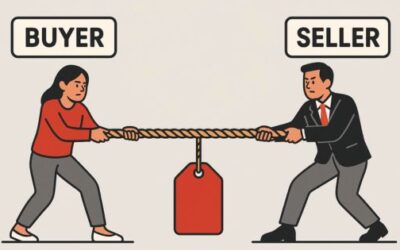Sales training only works when it improves execution in live deals. Effective programs help reps run better discovery, qualify accurately, control deal movement, and close with consistency. The result should be clear: higher win rates, shorter sales cycles, larger average deal size, and improved quota attainment.
Many companies track training through LMS completions, session attendance, and post-training surveys. These indicators show activity, but they don’t measure how reps perform once they’re back in the field. Without direct alignment to deal outcomes, these surface-level metrics fail to prove whether training actually works.
To measure sales training impact, leaders must inspect sales execution. That means defining the right performance metrics, tracking behavioral change over time, and tying improvements directly to revenue results. This guide outlines how to do that, step by step.
Track Metrics That Reflect Sales Execution
To measure training effectiveness, evaluate how reps perform in live opportunities. Use performance data that shows whether selling behavior has improved.
Start by tracking these six metrics:
- Win Rate – Indicates how often reps close qualified opportunities. An increase reflects stronger discovery, qualification, and control.
- Average Deal Size – Helps reveal if reps are selling on value or leaning too heavily on discounting.
- Sales Cycle Length – Shows how efficiently deals move from initial contact to close.
- Average Days in Pipeline – Flags deals that sit too long without progress. Fewer days suggest tighter execution.
- New Opportunities Per Month (NOP) – Highlights how often reps add new deals to their pipeline.
- Average Monthly Pipeline Size (AMPS) – Measures how well reps maintain consistent pipeline coverage.
Benchmark these metrics before training. Then review them again at 30, 60, and 90 days. Use the results to confirm whether reps apply the training in real deals and whether execution is improving. These indicators reveal where change is happening and where additional coaching is needed.

Upgrade Your Deal Review Process
A structured framework for teams facing unexpected revenue drops, slipping win rates, or declining forecast accuracy.
Inspect Behavior in Pipeline and Deal Reviews
Sales metrics show outcomes, but leaders also need to understand what’s happening inside the deals. Pipeline reviews and call inspections give visibility into how reps apply what they’ve learned.
During pipeline reviews, check for signs of improved qualification and deal progression. Look for opportunities with clear problem statements, buyer-confirmed urgency, and defined next steps. Reps should be documenting impact, mapping solution fit, and identifying key stakeholders early in the cycle.
Call reviews should show reps asking focused discovery questions, clarifying root causes, and connecting buyer problems to solution outcomes. Use these reviews to assess consistency in execution and identify whether new habits are forming.
If reps still rely on assumptions without buyer confirmation, pitch too early, or miss critical information, training hasn’t taken hold.
Use Sales Metrics to Guide Post-Training Coaching
Training doesn’t end when the sessions are over. Performance data should guide how you coach and reinforce the skills taught. If you don’t connect the numbers to coaching conversations, behavior won’t change.
Start with individual rep data. If one rep improved win rate but struggles with deal size, coaching should focus on value selling and negotiation. If another added more opportunities but shows longer cycle times, inspect their discovery and qualification.
Use pipeline reviews, call audits, and one-on-one sessions to tie coaching directly to what each rep needs to improve. Avoid generic coaching plans. Reps need feedback based on their own data and deals.
Sales leaders should review metrics weekly and flag trends early. If new habits aren’t showing up, step in with targeted coaching.

Stop Losing 80% of Your Pipeline to Poor Deal Management
Win rates are dropping, sales cycles are lengthening, and your CAC is soaring—all because deals lack proper management. This guide reveals why and how to reclaim millions in lost revenue.
Conclusion: Measure Sales Training by Its Impact on Execution
Sales training should drive better execution in live deals. If win rates, deal size, sales cycle, or pipeline quality aren’t improving, the training didn’t work. Measuring impact starts with tracking the right performance metrics and inspecting how reps apply what they learned.
LMS data and attendance reports don’t explain whether selling behavior has changed. Focus on metrics tied to deal outcomes, confirm behavior in pipeline and call reviews, and coach based on real performance trends.
If training doesn’t lead to cleaner qualification, better discovery, stronger deal control, and more consistent closes, it’s not worth the investment. The only way to know is to measure what happens in the field, consistently, specifically, and with the right data.



0 Comments